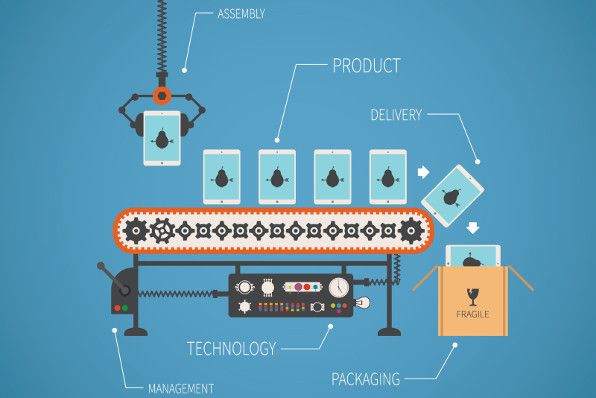
5 Hi-Tech Ways for Employees to Collaborate
May 17, 2017
Top 7 IoT Areas to Watch in the Future
June 7, 2017My name is Samantha Walters and I am what you would consider a “millennial executive” over here at Colocation America. Every Monday (get it, get it, Samantha on Mondays – the S.O.M column) I will write a little something on whatever is on my mind from business practices to current events and everything else in between.
This week’s topic is the genesis and completion of the Colocation America STEM Grant:
Let me start off by making one very important statement: I am human. At the end of the day, when the sun goes down and the world becomes still, I am, in fact, just a human.
Sure, this seems like an obvious statement to most—duh, I’m human—but it’s the most honest, and perhaps only, fact that I can make. Although my experiences, complete with my own successes and failures, may differ to yours, we are indeed the same. Before we drift off to sleep, during those last moments of the day, our thoughts are full of peace, love, and, yes, prosperity. We are bonded together by these thoughts and we, together, make up the world and that of the human experience.

But let me back up a moment and tell you how I came up with this single truth.
I was born into the nonprofit world. My Grandfather, a Los Angeles Unified School District (LAUSD) administrator, was on the Board of Directors for a little known nonprofit in Los Angeles. While pregnant with me, my Mom, a school-age counselor and former preschool teacher, was contracted to write a policy manual for that little nonprofit. Upon completion, the nonprofit hired my Mom as a director of programming. By the time I was five, she was the organization’s CEO.
Over the next 20+ years, with the support of the community and passionate individuals, that little nonprofit organization went from serving fewer than 100 youth to over 17,000 in Los Angeles County. Yeah, it sounds like a fairytale for most nonprofits but it is far from it. The way I see it, I spent most of my childhood years being plagued by the thought that “funding may be cut.” Many nights my Mom would come home, exhausted from a 12-hour day, grab a glass of wine and say, “I do not know if we will be able to serve these kids if afterschool funding gets cut.”
As time went on, my Mom, understanding that the threat of government funding cuts would never go away, turned to diversifying funding. The late-night conversation changed from uncertainty about government funding to uncertainty about private funders. One year the organization would receive funding from a particular foundation or corporate donor and the next year, heck, who knows. After submitting a major grant, I would spend the next couple months hearing the worry in my Mom’s voice about the big “what-if” hanging over her head—what if she didn’t get the funding? If she had no funding, what would she and the organization do?

Like any good leader of a nonprofit, she looked back at her strategy to diversify funding. Her next plan was to create some revenue-generating programs. The buzz term “social enterprise” sticks out to me during this phase. She then spent countless hours creating programs and finding opportunities where her organization could actually get paid for the wonderful work they did (this concept of nonprofits charging for services still confuses people today, but that is a whole other story).
Then again, even with paid programs, the constant struggle to keep the organization afloat never went away. The organization, essentially, received funding from the government, private foundations and corporations, and the occasional revenue-generating program. Yet I am still haunted by “what-ifs” that come with working within a nonprofit.
So, in the true fashion of a kid that grew up in a nonprofit family, I went for-profit.

Alright, that is not entirely true. I started my career doing Social Media Consulting for nonprofit organizations. Upon completing my undergraduate degree, I decided to pursue a Master’s degree in something called Social Entrepreneurship (and Change, technically). While getting my Master’s degree, I found myself working at a for-profit tech company as an unpaid intern.
Long story short, at 23 years old, I found myself a Vice President of that tech company. Yeah, it sounds (and was/is) pretty awesome but something was missing—I was not doing anything to give back. My heart was weighing heavy on me as I sat behind a computer and worked to make, essentially, “one guy more money.”
With that in mind, I took a risk with my livelihood, marched into the office of that “one guy,” and said, “If you want me to continue working here, you have to start giving back.” And the rest is history… No, I wish, but that was only the beginning…
You can find the whole article by clicking here.
You can also view more of Sam’s articles on our Business News Page!


1 Comment
Congrats on deciding to make a difference and calling on the company to incorporate philanthropy as a meaningful way to build a better world!